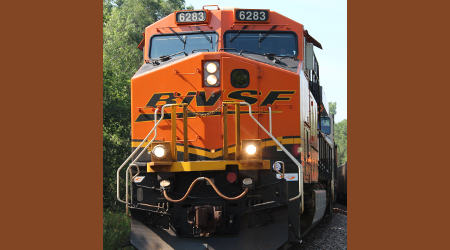BNSF addresses STB’s service concerns
(Source: Progressive Railroading 03/27/2018)

BNSF Railway Co.‘s $3.3 billion capital investment plan will put the railroad in a position to meet customers’ growth and service expectations this year, President and Chief Executive Officer Carl Ice told the Surface Transportation Board (STB) last week.
Ice is one of two Class I executives to respond so far to the STB’s recent request for 2018 service outlook reports, as the board looks into shippers’ complaints about deteriorating freight-rail service.
In his March 22 letter to the STB, Ice noted that BNSF has faced winter weather challenges as well as record traffic in recent months.
For example, in fourth-quarter 2017, BNSF set an all-time weekly volume record of almost 220,000 units — 11 years after the Class I achieved its previous record of 218,894 units.
“And the total volume currently being moved by BNSF remains at an historically high level for this time of year,” Ice said.
“With the recently enacted tax reform we expect to see the economy continue to improve, and we believe that our capital investments have us well-placed to meet our customers’ growth and their service expectations,” Ice wrote. “We will not hesitate to bring on additional resources – including infrastructure, equipment, and people – to handle the growth our customers bring us.”
Addressing the STB’s request for specific information, Ice reported that BNSF:
• has about 7,300 locomotives in service, with 701 additional high-horsepower units in storage that could be mobilized to provide sufficient surge capacity if necessary;
• has a “robust hiring plan” this year that exceeds attrition. The Class I has recalled virtually employees that were furloughed since 2016;
• anticipated that strength in the industrial economy and solid consumer demand would lead to growth in corresponding business segments, and the railroad’s year-to-date results have closely followed its plan expectations;
• “consistently and frequently communicates” with customers. Communication includes a biweekly update by business unit, customer notifications of emergent issues and daily interaction between the sales and marketing team and their customers;
• will spend $3.3 billion this year to maintain a “strong, fluid network that allows us to meet changing customer demands.”
The largest component of BNSF’s capital expenditure plan involves replacing and maintaining its core network “to ensure trains can run safely and limit the need for unscheduled service outages that can slow down the rail network and reduce capacity,” Ice wrote.
“Our record investments in capacity and maintenance over the past several years have positioned us well to meet our customers’ expectations,” he said.
